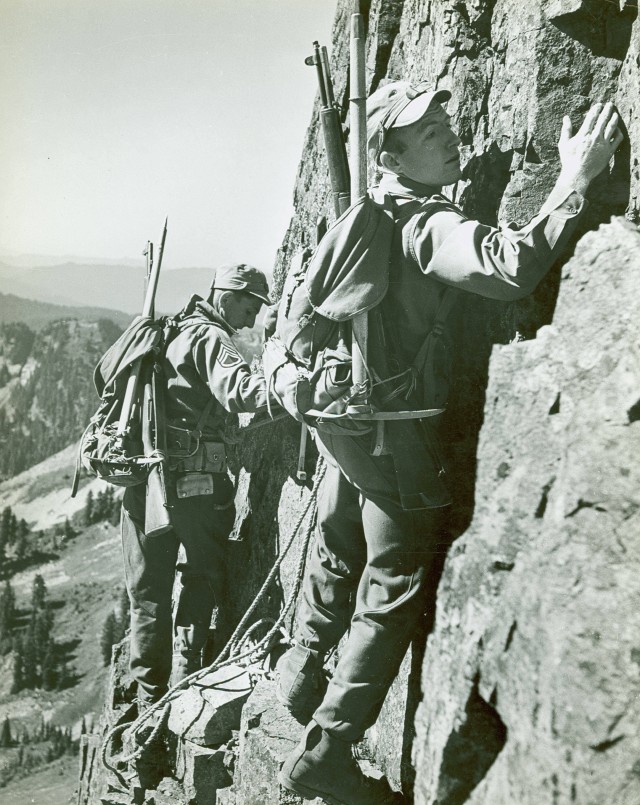Throughout history, armies have had to deal with mountainous terrain. Some 38 percent of the worldAca,!a,,cs landmass is considered to be mountains. As early as 328 B.C.E. soldiers under Alexander the Great scaled a several thousand foot cliff near Samarkand in central Asia and captured an enemy who thought themselves secure.
This feat would be repeated over two thousand years later by soldiers of the 86th Infantry Regiment in Italy. In the winter of 1944-45 the 10th Mountain Division arrived in Italy. The Division had been developed from a novel idea to create a corps of mountaineers to fight in EuropeAca,!a,,cs mountains. The division had trained in the Rocky Mountains on skis, snowshoes, and rock and ice climbing techniques. Within two months they would put their training to the test.
The Allied advance north toward the Po River valley had been stalled by German defensive positions. Countless assaults against these enclaves along the ridges and high ground above the valleys were repulsed. The Fifth ArmyAca,!a,,cs axis of advance was to be along Highway 64 through the Reno River valley into Bologna. German forces of the LI Mountain Corps were heavily entrenched on Monte Belvedere and along the ridgeline dominating the valley. These positions were, in turn, defended by positions on Riva Ridge, whose slopes rose to fifteen hundred meters above the valley floor. Any troops attacking Monte Belvedere would be vulnerable to fire on their left and rear from Riva Ridge. The ridge had to be taken to allow the Allies to push through the Winter Line.
The first week of February, 1945, saw numerous reconnaissance patrols to the base of the ridge to find covered routes of advance across the open fields of snow and scrub trees. These patrols were accomplished on skis and snowshoes as the specialized training of the unit proved invaluable. Eventually, four routes were identified and the troops of the 1st Battalion of the 86th plus one company of the 2nd Battalion were withdrawn to rehearse for the attack.
On the bitterly cold morning of February 18, at 0117, the four companies began the assault. Trail teams moved forward to secure the routes. At the base of the ridge, specially selected teams of lead climbers began the ascent. Loaded with coils of rope, pitons, hammers and snap links, they began to lay in fixed-rope lanes to the summit. As they reached the summit, the rest of the men began the climb, and by dawn nearly the entire Battalion was on the summit. The German defenders mounted several counterattacks, all of which were repulsed. Their confidence in the ability of terrain to defeat the Americans had been trumped by the skill and training of the U.S. Army mountaineers. Subsequent assaults on Monte Belvedere carried that ridge and allowed the Allies to move into the Po valley, the decisive strike which won the war in Italy.
The concept of specially trained mountain troops had proven its worth. The Army would forget this lesson for a time after the war. The 10th Mountain Division would later be reactivated, and the Army would again train military mountaineers to turn terrain to their advantage.
Related Links:
Unit History: Divisions: 10th Infantry Mountain.
Unit History: Infantry Regiments: 86th Infantry Regiment
Winter Warfare: Military Skiing
World War 2: Mediterranean Theater: Italy: Italian Campaign Overview.








Social Sharing